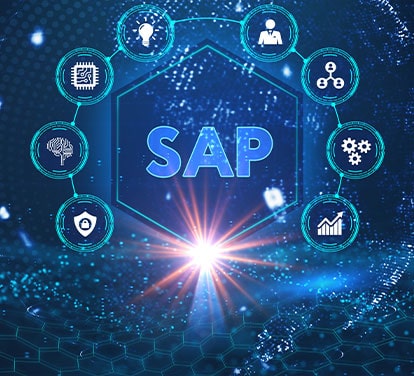Globalization is on the rise and so are mergers and acquisitions. In the current business scenario, the major problem faced by business giants is with consolidated financial reporting of the enterprise. Each growing enterprise would have some or all the following kinds of subsidiary companies whose financial information needs to be consolidated into the parent:
- Subsidiaries which are accounted in the same instance but with different accounting structures to suit operational needs
- Subsidiaries following a different calendar
- Subsidiaries operating in different countries with the local currency as their functional currency different from the parent enterprise
- Subsidiaries being accounted for in different instances of Oracle
- Subsidiaries being accounted for in ERP system other than Oracle
Consolidation is a period-end process of combining the financial results of separate subsidiaries with the parent organization to form a single, combined statement of financial results. A global Consolidation System is a periodic and annual process when companies prepare their consolidated financial statements.
Types of Consolidation:
Below are brief details of various consolidation methods available:
- Reporting Only Consolidations: used when subsidiaries and the corporate ledger share the same chart of accounts and calendar.
- Balance Transfer Consolidations: This type of Consolidation is used when subsidiaries and the corporate ledger have either or not different charts of accounts and calendars.
- Financial Management Consolidations: If there are complex factors in financial consolidation requirements like:
Complex company structures include joint ventures, minority interest holdings, and partially or wholly owned subsidiaries.
Multiple heterogeneous systems, including non-general ledger data sources that, are required to support non-financial or industry-specific metrics, disclosures, and footnote schedules.
Consolidation Methods

Let us understand the first two consolidation methods-
- Reporting only Consolidation Method:
This method is used when: -
- All subsidiaries and the corporate ledger share the same calendar.
- One of the subsidiaries has a local chart of accounts and local currency. This subsidiary uses a secondary ledger to record balances in the corporate chart of accounts and the corporate currency.
- One subsidiary has a local currency and uses reporting currency functionality to record balances in the corporate currency.
In this method, following tasks are followed: -
- Group the ledgers in a ledger set if the ledgers share the same chart of accounts and calendar.
- Translate balances to the corporate currency for ledgers, not in the corporate currency.
- Create eliminating entries.
- Report using the ledger set and the corporate currency as reporting parameters to view the consolidated balances.
- If each entity's ledger has a different chart of accounts or calendar from the corporate chart of accounts and calendar, a secondary ledger is used to conform to the common chart of accounts and calendar. It is included in the consolidation ledger set.
Benefits of Reporting Only Consolidation:
- There is no need to run additional processes to consolidate unless ledgers have a different currency than the consolidation currency.
- View the consolidated balances anytime. This cannot be done in the Balance Transfer Consolidation method because that method requires a balance transfer to be done to achieve consolidation.
- Faster close process.
Reporting only Consolidation Method: Example

Configuration Steps
Define Primary Ledger with Corporate currency (USD) and Corporate COA (US Chart of Accounts)

Define secondary Ledger where the primary ledger of this secondary ledger has Local COA Local Currency. The secondary ledger Currency is the US, and the Secondary ledger COA is the US Chart of Accounts.

Define Reporting currency for the Primary ledger where the Primary ledger has Local Currency and Corporate COA.

Define Ledger set having corporate ledger, Subsidiary Secondary ledger, and Subsidiary primary ledger

Run Translate General Ledger Account balance between translating balances from Local Currency to USD

- Balance Transfer Consolidation Method:
In the case where multiple subsidiaries and the corporate ledger do not share the same chart of accounts and calendar, we can take the help of the Balance Transfer Consolidation method where-
- The subsidiaries use local charts of accounts and currencies. The Corporate ledger uses a corporate chart of accounts and currency.
- The subsidiaries use balance transfers to convert the local balances to the corporate chart of accounts and currency.
We need to follow the steps below for the Balance transfer consolidation method

Consolidation in Oracle Fusion supports 2 balance transfer methods: first, when the balance data is transferred from a primary ledger to a balance-level secondary ledger assigned to it, and second when the balance data is transferred from one ledger to another without a predefined relationship. In both cases, drill down is possible from the target ledger balances to the source ledger balances; below are some instances-
- When the source and target ledgers currency is the same, we can drill down on the amount entered from the Journal Lines page or the Journal page in the target ledger, which resulted from a balance transfer.
- When the source and target ledgers do not share a ledger currency, it is also necessary to translate the source ledger to the target ledger's ledger currency before transferring balances.
Balance Transfer Consolidation Pros:
- Do not require a standardized chart of accounts and calendar.
- In a journal or subledger level reporting currency ledger, translated balances are available from either
- Reporting Only or Balance Transfer Consolidations.
- Reporting level reporting currency ledger needs to have the translation process run when it has a different currency than the consolidation currency.
Balance Transfer Consolidation Cons:
- Require an additional consolidation ledger to maintain balances, or the current parent ledger can serve as the consolidation ledger. By using the parent ledger, transfer the subsidiary balances directly into that ledger.
- Needs to run a balance translation process if the currency differs from the consolidation currency. Then run the transfer processes to view the consolidated balances.
- Maintain charts of accounts mappings, which can be labor intensive.
- Outdated balance transfers must be reversed and posted, and then a new balance transfer is run every time the source ledger's balance changes.
- Requires translation to be rerun if ledger currency is different than the consolidation currency.
Balance Transfer Consolidation Method Example

Configuration steps:
Define Subsidiary Primary ledger1 with Local Currency and Local COA

Define Reporting currency (USD) for the above ledger

Define Subsidiary Primary Ledger2 with the Local COA and Currency

Define Reporting currency (USD) for the above UK ledger

Define Primary ledger with Corporate Currency (USA) and Corporate COA

Define Consolidated Ledger with Corporate Currency and Corporate COA

Define COA mapping between Consolidated ledger and other Primary Ledgers

Month End Process
Run the below Schedule process to translate Local currency balances to corporate currency balances

Run the below Schedule process to transfer Ledger balances from Subsidiary and Corporate ledgers to the Consolidated ledger.

Conclusion
Jade Global is one of the few implementation partners who has the required expertise and experience in implementing end-to-end Oracle ERP cloud managing all business processes that includes Oracle Fusion Financials cloud and SCM cloud. Our consolidation in Oracle Fusion Cloud practice is rightly based on Oracle standards, which helps us in providing top-notch solutions to our clients.
Our Advantage
- Provides end-to-end solutions including business process and technology
- A highly skilled pool of financial consultants who are certified on the latest financial cloud products
- Oracle platinum partner and co-development partner on Oracle Fusion Applications
- Multiple offerings to integrate any 3rd party system with Oracle Fusion Cloud Applications













